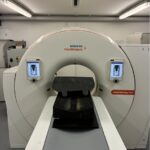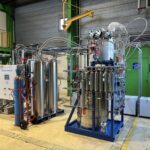In Europe, more than 50% of the funding earmarked for infrastructure development is allocated to the maintenance and modernisation of existing facilities. This means that there is a growing interest in assessing the Residual Life Assessment (RLA) of facilities. These assessments provide industrial manufacturers in all sectors with information about the overall condition of their equipment, and offer recommended ways of extending lifespan while guaranteeing operational safety.
When and why should it be used? Bruno Depale – specialist in structural calculation at Cetim, answers.
Can an industrial manufacturer use equipment safely and without any concerns until the end of its contractual life?
Bruno Depale: Yes, this can be done in accordance with the contract, but it should be kept in mind that the contractual service life is a theoretical figure provided by the equipment manufacturer and is often associated with a number of cycles. The true service life of an item of equipment (component, machine, infrastructure, etc.) actually depends on how it is used and how often it is used. As such, industrial manufacturers are also encouraged to carry out a health check on their equipment when it reaches 80% of its contractual life. The same applies in the event of premature ageing, a major incident, an increase in the number of failures, a major change in use or a modification in relation to its initial design. Given that an item of equipment is made up of several components with different service lives and different levels of damage, it is always the most critical component that determines the shutdown point. Only an RLA study, involving much more than a simple annual inspection, will enable operators to confidently predict the future use of their infrastructure or equipment.
How is the RLA assessed?
B. D: Once an item of equipment is in use, its initial health capital is consumed. To assess its RLA, the experts conduct an investigation over time. The challenge lies in retracing the history of use of the equipment in order to predict its future life. This involves, for example, determining the frequency and distribution of loads lifted by a lifting device, any appreciable damage or maintenance operations, etc. If the risks become too great, it may be advisable to stop the operation of a machine. In most cases, however, the initial operating life can be extended by pragmatic combinations of repair or enhanced monitoring solutions. For example, downgrading a piece of lifting equipment (reducing its lifting load) can be combined with one-off repairs (removing corroded parts) and more frequent inspections focused on the most critical areas.
How can technological developments enhance this expertise?
B. D: One of the keys to the future hinges on the development of innovative technologies designed to improve our ability to anticipate maintenance operations and the risks of failure in real time. In addition, the integration of wireless sensors and the automatic transmission of their data into the network are opening up new control applications that were hitherto unattainable in structural health monitoring (SHM). Furthermore, IIoT, data processing and big data have made great strides in recent years and are becoming more accessible. Together, these innovations round out the investigation and help in the decision-making process. However, they are no substitute for the expert engineer who determines the most appropriate measures for continued safe operation.
For more information :
- Contact our expert
- check our failure analyses dedicated web page
- check our available trainings on failure analyses




